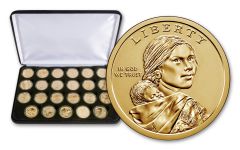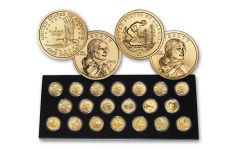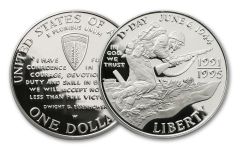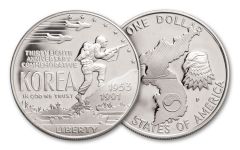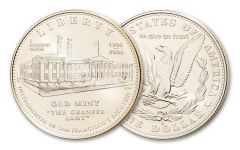Local Storage seems to be disabled in your browser.
For the best experience on our site, be sure to turn on Local Storage in your browser.
Dollar
Generally speaking, U.S. dollar coins fall within two categories: circulating coinage and coins within the commemorative coin program. Dollar coins are sold by the U.S. Mint to the Federal Reserve for distribution and to be used in exchange for goods and services. With that being said, the U.S. Mint is also a major producer of $1 silver and gold bullion coins.
2000–2022 Sacagawea Dollar 23-pc Year-Date Collection BU
$139.00 As Low As $134.90- Qty Credit Card Wire
- 1+ $139.00 $134.90
In Stock2000–2019 Sacagawea Dollar 20-pc Year-Date Collection BU
$129.00 As Low As $125.19- Qty Credit Card Wire
- 1+ $129.00 $125.19
In Stock1991–1995-W $1 Silver World War II 50th Anniversary Commemorative Proof
$59.95 As Low As $58.18- Qty Credit Card Wire
- 1+ $59.95 $58.18
In Stock1991-P $1 Silver Korean War Memorial Commemorative Proof
$39.95 As Low As $38.77- Qty Credit Card Wire
- 1+ $39.95 $38.77
In Stock2006-S San Francisco Old Mint Commemorative Silver Dollar BU
$59.95 As Low As $58.18- Qty Credit Card Wire
- 1+ $59.95 $58.18
In Stock
History of US Dollar Coins
The dollar coin was first authorized in the United States Coinage Act of 1792 and the denomination featured Lady Liberty on the obverse and eagles on the reverse through several iterations of the coin. The first circulating dollar coin to feature a U.S. president was the Eisenhower dollar coin issued in 1971. Between 1971 and the issuance of President and Native American dollar coins, the dollar coin was redesigned by the U.S. Mint twice! In 1976, the Bicentennial dollar coin was issued, followed quickly by the Susan B. Anthony coin which was issued in 1979, 1981, and 1999. In recent years, the U.S. Mint has produced dollar coins as part of three different programs: Native American dollar coins, presidential dollar coins, and American Innovation dollar coins. American Silver Eagles also carry a $1 denomination, but are rarely referred to as a US Dollar due to them being associated with bullion and collectible coinage.
First issued in 1892, the first commemorative dollar coin was a $1 silver coin which has historically been the most popular authorized denomination out of all the commemorative coins. In 2021, the U.S. Mint struck silver dollar coins to honor the 100th anniversary of the Morgan Dollar and Peace Dollar coins. The U.S. Mint produces these commemorative coins through an Act of Congress to celebrate and honor American people, places, events, and institutions. These U.S. coins not only honor historical events and citizens, but they help raise money for important causes by implementing a surcharge in the price of the coin that goes to organizations/projects that are benefiting the community. Since the beginning of the modern commemorative in 1982, the United States Mint has raised more than $500M to help build new museums, maintain national monuments, preserve historical sites, and support various Olympic programs.
Do They Still Make $1 Coins?
Yes. The Native American and American Innovation dollar coins are currently in production and circulation, while a number of commemorative dollar coins are also continually being minted. In January 2021, the Circulating Collectible Coin Redesign Act of 2020 was enacted to redesign the dollar coins for the celebration of the Semiquincentennial (250th anniversary) of the United States. For this historic anniversary, the U.S. Mint authorized designs “emblematic of the United States semiquincentennial” that would be issued in addition to the Native American and American Innovation dollar coins in 2026. As previously mentioned, American Silver Eagles also carry the $1 denomination.
Types of Dollar Coins
As discussed above, there are a number of different mints of U.S. dollar coins in terms of composition, design, and production purposes. Among the numerous mints of the dollar coin, here are a few examples of some of the most popular and iconic designs.
While the production of the first silver dollar coin wasn’t until two years after the 1792 Coinage Act, it is also important to note the introduction of the U.S. gold dollar coin, coincided with the Gold Rush and was minted in 1848 from 90% pure gold and also featured Liberty in the design.
Sacagawea Gold Dollar Coin
After a national competition, a new design for the dollar coin was chosen featuring a portrait of the Shoshone Indian, Sacagawea, carrying her infant son, Jean-Baptiste/"Pomp", and after intense marketing and promotion, nearly 750 million Sacagawea coins were struck for circulation before dropping to 5-6 million coins per year from 2002 on. Even with the creative marketing efforts for the coin, they are seldom seen outside the collector circles.
One effort in marketing these coins was an interesting strategy to put 5,500 Sacagawea dollars in random boxes of Cheerios cereal. It wasn’t until years later that collectors and numismatists discovered that these were special coins that featured the prototype reverse with 12 tail feathers on the reverse and have proven to be the most valuable coins in the series.
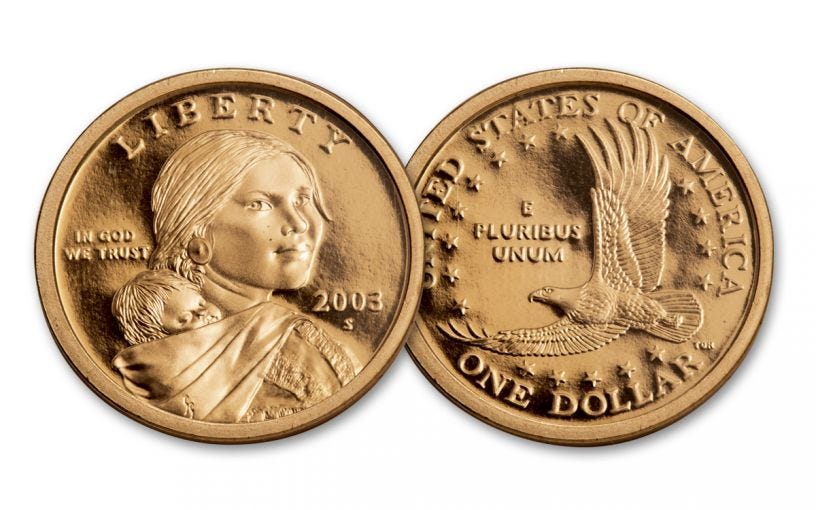

Seated Liberty Silver Dollar Coin
The Seated Liberty coin design was first produced on a large scale in 1840. This design parallels that of other issues of sitting Miss Liberty with thirteen stars above and the date below. The reverse shows the American eagle perched on an olive branch and holding three arrows, with the words “UNITED STATES OF AMERICA” inscribed above and” ONE DOL.” below. The Seated Liberty dollar design remained relatively the same after 1840 but was modified in 1866 with the addition of the motto “IN GOD WE TRUST” on the ribbon or scroll above the eagle, which was continued through 1873. Within the 1840-1865 span, there are a number of hard to find issues, and in particular, the 1851, 1852, and 1858 are particularly major rarities.
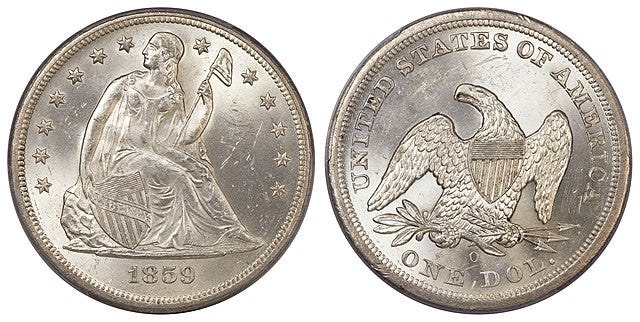

Morgan Silver Dollar Coin
The Coinage Act of 1873 led to the silver dollar's demise when it demonetized the precious metal despite the production of trade dollars for overseas circulation. As a response to this drastic effect on the American economy, Congress passed the Bland-Allison Act in 1878. This act required the U.S. government to purchase large quantities of silver for the purpose of converting it to silver dollars, restoring the dollar denomination with the birth of the Morgan silver dollar.
The coin’s designer, George T. Morgan, created one of the most popular silver dollars when designing the Morgan dollar coin. Its large size and pleasing appearance made it both affordable and desirable. Since Morgan silver dollars were struck without interruption from 1878-1904, then again in 1921, the large abundance of the coin made it that much more appealing and attainable.
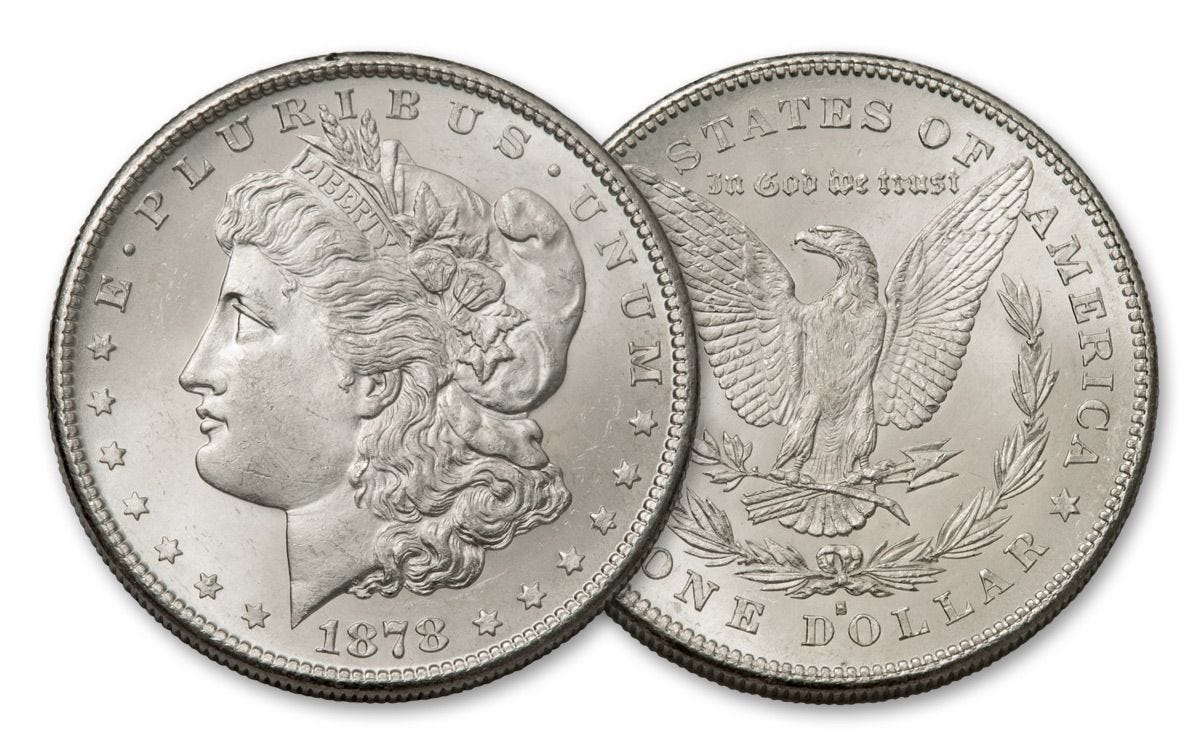

Peace Silver Dollar Coin
Designed by Anthony DeFrancisci, the Peace silver dollar was first produced in December 1921 following a large mintage of Morgan dollars of that same year. The overall sentiment of the coin was to commemorate the peace that followed World War I. The obverse depicts Miss Liberty’s profile facing left, wearing a diadem of spikes, a similar style that is seen on the Statue of Liberty. The reverse shows an eagle perched on a rock, with a laurel branch and rays of an unseen sun emanating from the lower right.
Mintage of Peace silver dollars has been interesting throughout the years. From 1921 through 1928, mintage was continuous before pausing until 1934, where it resumed just until 1935. In 1964, the Denver Mint struck 316,076 Peace Dollars, but all the coins were destroyed before they could be released into general circulation. With that said, rumors persisted of Mint employees purchasing or “taking” some of the coins, but due to fear of confiscation by Treasury officials, one has yet to make an appearance on the market. Were it legal to own, the 1964-D Peace Dollar would become one of the most valuable of all United States coins.
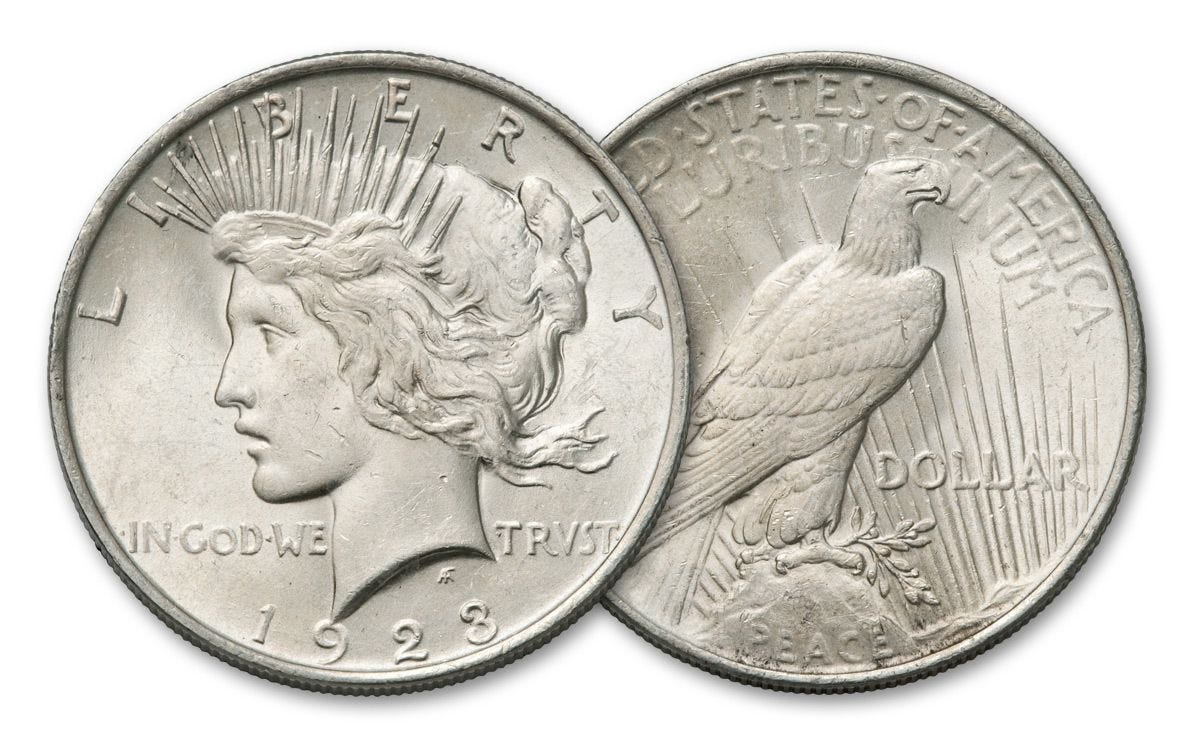

Eisenhower Silver Dollar Coin
In 1970, Congress passed legislation authorizing a new dollar coin to commemorate two key dates within American history: the death of General Dwight D. Eisenhower and mankind's first landing on the moon, which occurred on July 20, 1969. The obverse design features a bust of Eisenhower facing left while the reverse copies the insignia of the Apollo 11 mission (minus the name of the mission). Commonly referred to as "Ike" dollars, these dollar coins made for circulation were of a
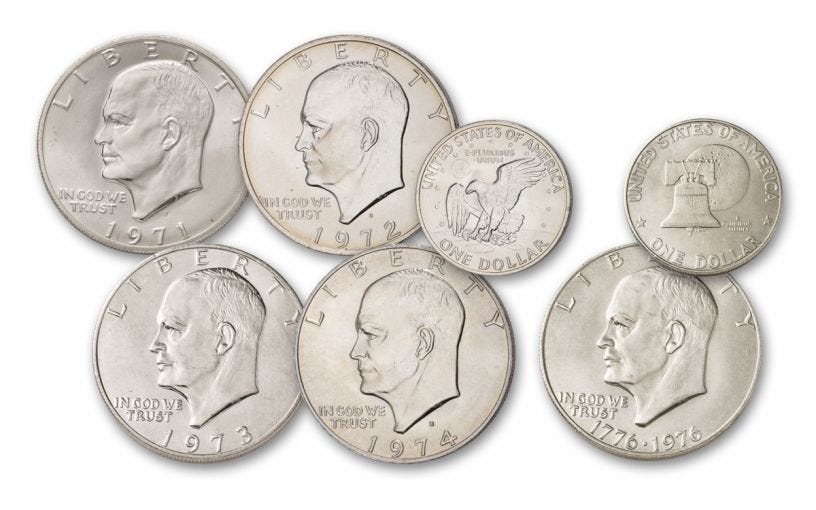

Is a Silver Dollar Worth a Dollar?
Although U.S. commemorative dollar coins are technically considered legal tender, they are not minted for general circulation. Between 1794 and 1935, the U.S. dollar silver coin was minted in a variety of fashions and styles, and although this coin has a nominal face value of one dollar, silver dollars are generally worth much more due to their pure silver content and collectibility status.
Are Gold Dollar Coins Real Gold?
Yes! Issued from 1849-1889, the American one dollar gold coin weighed exactly 1.672 grams and contained 1.505 grams of gold. The only “gold” dollar coin that is not made of real gold is the Sacagawea golden dollar coin, as it has a physical makeup of a three-layer clad construction: pure copper sandwiched between outer layers of manganese brass. The Sacagawea dollar coin has an overall composition of 88.5% copper, 6% zinc, 3.5% manganese, and 2% nickel.
Collecting Dollar Coins
Coin collecting is one of the oldest hobbies in history, and U.S. dollar coins are no different. Collecting dollar coins can be an enjoyable and competitive endeavor as there are a number of different ways to collect them. From type sets to key dates and the variety of base metals, a good balance is necessary as the United States has gold dollar coins, silver dollar coins, and dollar coins with a base metal composition of brass, copper, zinc, nickel, and other metals.
Examples of Some U.S. Dollar Key Dates
-
Seated Liberty Dollar: 1851, 1852 and 1858
-
Morgan Dollar: 1889-CC, 1893-S, 1895 (Proof only), and the 1895-O
-
Peace Silver Dollar: 1922 high relief and the 1964-D
-
Sacagawea Dollar: 2000 “cheerios” Sacagawea dollar
Buying Dollar Coins from GovMint.com
GovMint.com is the top authority with U.S. coinage, no matter the year, and has been serving the industry for over 30 years. We are one of the largest distributors of collectible coins and currency issues in the United States. As a private retailer, we are not affiliated with the U.S. government or U.S. Treasury in any way. Through our various endeavors, we have been able to provide collectors like you with leading-edge product introductions and new innovations within the collecting field.
GovMint.com is an authorized dealer for U.S. dollar coins that are authenticated, certified, and graded by Numismatic Guaranty Corporation (NGC) and Professional Coin Grading Service (PCGS). We are a resource you can trust!
See Our Exclusive Partnerships and Products Here!

